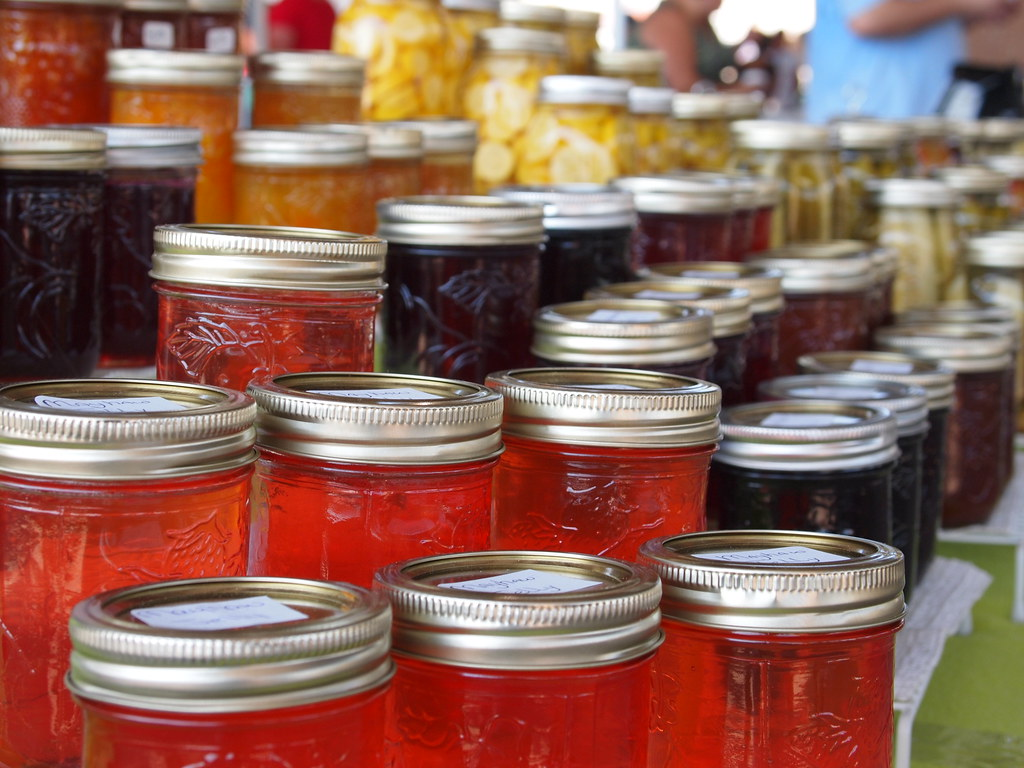Jams have been a staple in kitchens around the world for centuries. From simple fruit spreads to elaborate gourmet creations, jams offer a delightful way to preserve the flavors of fresh fruits.
This article delves into the fascinating world of jams, examining their history, varieties, and the science behind their preservation.
Whether you’re a seasoned cook or a curious food enthusiast, you’ll find a wealth of information to enhance your understanding and appreciation of these sweet, fruity delights.
The History of Jams
Jams have a rich history that dates back to ancient times. The art of preserving fruits can be traced to the early civilizations of the Middle East, where honey and sugar were used to extend the life of seasonal produce.
The process evolved over the centuries, with significant advancements made during the Middle Ages in Europe.
By the 18th century, the practice of making jam became more refined and widespread, thanks to the development of refined sugar and improved cooking techniques.
The term “jam” itself comes from the French word “jambe,” meaning “leg,” which was used to describe the way fruit pieces were suspended in a gel-like substance.
Over time, this evolved into the term “jam” as we know it today, encompassing a wide range of fruit preserves.
Types of Jams
There is a myriad of jam varieties, each offering unique flavors and textures. Understanding the differences between them can help you choose the perfect jam for your needs:
Fruit Jam
Fruit jam is the most common type and is made by cooking fruit with sugar and pectin. The result is a thick, sweet spread that captures the essence of the fruit used. Popular fruit jams include strawberry, raspberry, and blueberry.
Each type of fruit jam has its own distinct flavor profile and texture, depending on the fruit’s natural sweetness and acidity.
Low-Sugar Jam
For those who prefer a less sweet option, low-sugar jams use less sugar or alternative sweeteners. These jams are ideal for people monitoring their sugar intake but still want to enjoy the fruity taste. They often contain added pectin to achieve the desired consistency.
No-Sugar Jam
No-sugar jams are made using sugar substitutes or are simply made with fruit and pectin alone. These jams cater to those with dietary restrictions or who are looking to reduce their sugar consumption.
They can have a different texture and taste compared to traditional jams, but they are still a flavorful choice.
Preserves
While not technically a jam, preserves are worth mentioning. They are similar to jams but contain larger pieces of fruit or whole fruit.
This gives preserves a chunky texture and a more pronounced fruit flavor. Marmalade, which is made from citrus fruits and includes the peel, is a popular type of preserve.
The Science Behind Jams
Creating the perfect jam involves a delicate balance of ingredients and precise techniques. The key components are fruit, sugar, and pectin:
Fruit
The quality and ripeness of the fruit are crucial. Ripe fruit provides the natural sugars and flavors that form the foundation of the jam. Different fruits have varying levels of natural pectin, which affects the consistency of the jam.
Sugar
Sugar acts as a preservative and helps to thicken the jam. It also enhances the flavor of the fruit. The amount of sugar used can influence the sweetness and texture of the jam.
In traditional recipes, sugar is used in a 1:1 ratio with fruit, but this can be adjusted based on personal preference.
Pectin
Fruits naturally contain a gelling ingredient called pectin. It helps the jam set and achieve the desired consistency. Some fruits, like apples and citrus, are high in pectin, while others, like strawberries, are low. When making jam, additional pectin might be added to ensure it gels properly.
FAQs
Can I use frozen fruit to make jam?
Yes, you can use frozen fruit to make jam. In fact, frozen fruit can be a convenient alternative to fresh fruit, especially when certain fruits are out of season. Just ensure that the fruit is fully thawed and drained of excess moisture before using it in your jam recipe. This will help achieve the right consistency and flavor in your final product.
How long can homemade jam be stored?
Homemade jam can typically be stored for up to one year if it is properly sealed and stored in a cool, dark place. Once opened, it should be refrigerated and used within a few weeks. Always check for signs of spoilage, such as mold or off-smells, before consuming.
Can I reduce the sugar in jam recipes?
Yes, you can reduce the sugar in jam recipes, but it may affect the texture and preservation. Lower sugar content can lead to a softer set or shorter shelf life. If you prefer a less sweet jam, consider using alternative sweeteners or low-sugar pectin, which is specifically designed for recipes with reduced sugar.
What is the role of lemon juice in jam-making?
Lemon juice serves several purposes in jam-making. It helps to enhance the flavor of the fruit, balance sweetness, and provide acidity, which aids in the setting process. The acidity from lemon juice also helps to preserve the jam and prevent spoilage by creating an unfavorable environment for bacteria.
How do I sterilize jars for jam?
To sterilize jars, wash them thoroughly in hot, soapy water. Rinse well and then place them in a large pot of boiling water. Boil the jars for 10 minutes to ensure they are completely sanitized. Allow the jars to air dry on a clean towel or drying rack before filling them with hot jam.
Jams
Understanding the basics of jam-making and storage can enhance your culinary experience and ensure that your homemade jams are delicious and safe to enjoy. Whether you’re experimenting with new recipes or perfecting traditional ones, these FAQs cover essential aspects of jam preparation, helping you achieve the best results with your fruity creations.
To read more, click here
